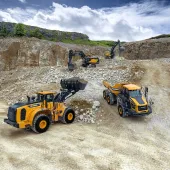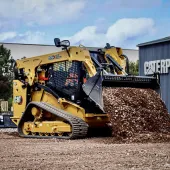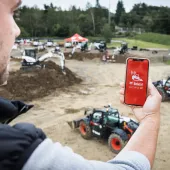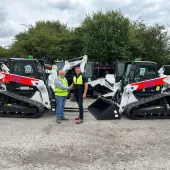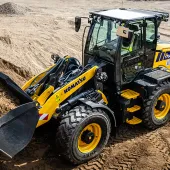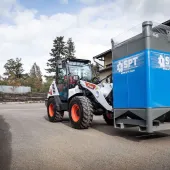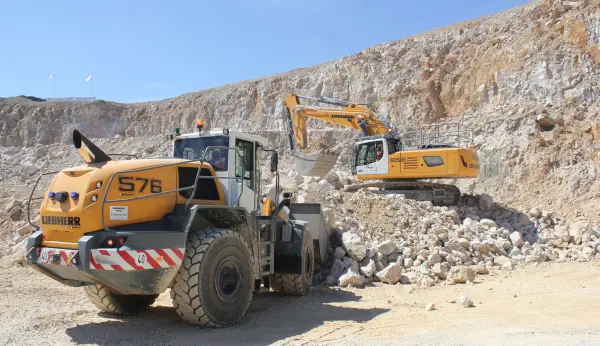Customer-Driven Innovation
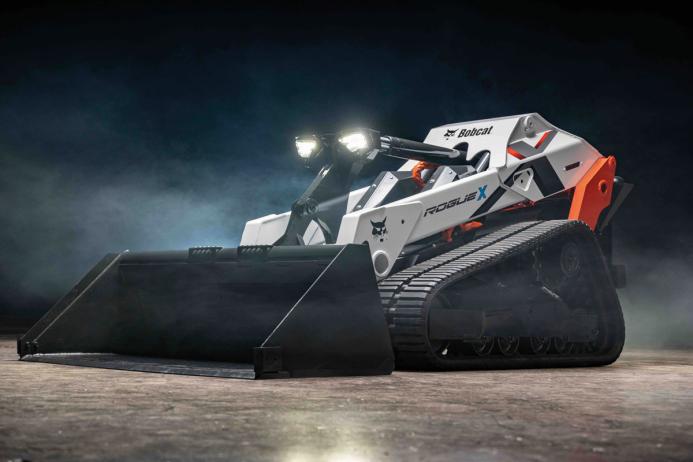
First published in the October 2025 issue of Quarry Management
Joel Honeyman, vice-president of global innovation at Bobcat, outlines the company’s approach to innovation and how it is driving safer, more efficient solutions for customers
Bobcat’s Innovation department has unveiled several futuristic machine concepts in recent years, including the autonomous and all-electric RogueX1/RogueX2, the all-electric T7X compact track loader, and the S7X skid-steer loader. While these prototypes were presented as visions of the future, they also serve as test platforms for advanced technologies that are now gradually being integrated into new Bobcat models.
‘Our innovation approach is mainly focused on practical developments that help users do their jobs faster and better,’ explained Joel Honeyman, vice-president of global innovation at Bobcat, who has been with the company for 28 years.
Before taking on responsibility for product development and innovation, Mr Honeyman, spent a decade in sales – an experience he considers invaluable. ‘In sales, I often encountered questions from customers and prospects about new technology, functionality, and applications. That automatically makes you think about product development,’ he explained.

Since 2014, Mr Honeyman has led a dedicated team focused solely on innovation. Working closely with customers and dealers, Bobcat gather insights into everyday problems and challenges on site.
‘We come up with solutions, develop them and, ultimately, apply them to our machines,’ continued Mr Honeyman. ‘Technology is a tool that helps customers do their work more efficiently. You don’t necessarily need earth-shattering innovations or super-advanced technology for this. The greatest added value is often in the basics – making machines easier to use and delivering better performance. We introduce innovations as quickly and as widely as possible and then optimize them based on customer feedback.’
Innovation strategy
For Mr Honeyman, the development of concept machines such as the RogueX1/RogueX2, and the T7X compact track loader, is not the end. ‘We are focusing on the jobsite of the future, in which autonomous operation, enhanced safety, sustainability and connectivity play a key role,’ he remarked. ‘Certain technologies are inevitable for this. It is important to explore new ways of working and new machine designs in line with this development direction.
‘This leads to concept machines. It is not certain that these exact machines will come to market in their current form, but they provide a platform for testing new technologies. If you build an autonomous machine, you no longer have an operator – and therefore no cab. That is what you see with the RogueX. The T7X is fully electric, and in its design, we replaced the traditional hydraulic system, which normally powers the lift arms, with electric actuators controlled by dedicated software.’
Bobcat are also at the forefront of sustainability. The E10e was among the first electric excavators to be produced in series, and since then the company has introduced several more battery-electric and all-electric models, including the T7X, S7X, and the recently launched TL25.60e telehandler. Earlier this year, at the LogiMat trade fair, Bobcat also unveiled a forklift powered by a hydrogen fuel-cell.
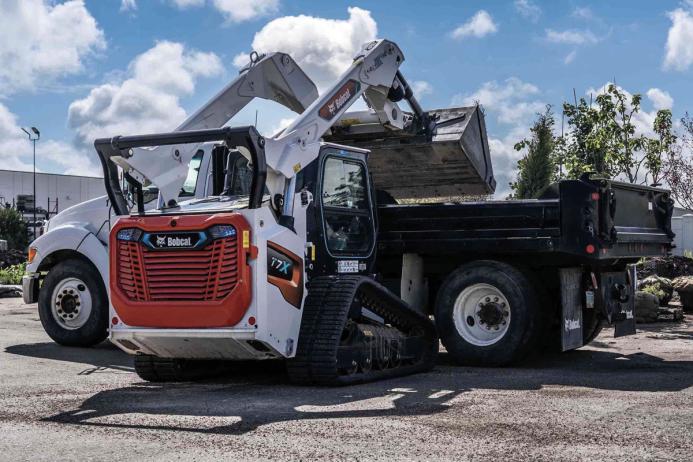
In addition, Bobcat work in close partnership with specialist technology companies to accelerate the application of new solutions. These collaborations include Ainstein, developers of high-resolution radar technology, and Trimble, experts in 3D scanning and virtual reality. Bobcat’s own role is focused on machine engineering and the development of the underlying software platform that integrates, connects, and controls these technologies.
The core priority of Bobcat’s innovation strategy is to develop new technologies and applications that enable customers to work faster, more efficiently, more safely, and more sustainably.
Over the years, Bobcat have introduced a range of practical innovations to support machinery operators. These include compact track loaders designed for use on difficult terrain, the Bob-Tach system for easy attachment changes, and MaxControl for remote operation of loaders. Even small refinements – such as simple buttons to automate routine functions like lifting a bucket – can deliver significant efficiency gains and time savings for users.
Harnessing data on jobsites
‘We now have access to enormous amounts of data that are important for carrying out the work, but the construction site itself also generates vast amounts of information,’ emphasized Mr Honeyman. ‘In our view, information about the work area and object detection are extremely important. This data not only makes manoeuvring with (autonomous) machines easier but also enhances safety.
‘We use highly accurate GPS equipment to map all static objects on site, which can be displayed using real-life images or in virtual reality. These can be projected on to an in-cab display or wearables such as VR glasses.’
He continued: ‘With the help of OLED technology, images can be integrated directly into the machine windows, turning them into transparent displays to improve productivity. For moving objects and people, smart cameras, radar, and sensors can increase operator awareness. With systems such as Bobcat’s concept collision warning and avoidance technology, operators can receive an audible alert – or the machine can stop automatically when an object is detected.’
Alongside jobsite data, Bobcat are also leveraging data from the machines themselves. The company’s Machine IQ system allows owners and operators to remotely monitor key metrics such as location, operating status, fuel consumption, and technical condition. ‘Based on these data, you can improve machine utilization, optimize fuel consumption, and schedule maintenance or repairs,’ said Mr Honeyman. ‘This helps customers get the most out of their equipment, while also protecting their investment.’
For Bobcat, innovation must deliver value but remain accessible and affordable. ‘We regularly ask customers what they are prepared to pay,’ continued Mr Honeyman. ‘We want to make innovation accessible, which is why we not only introduce innovations as an update on new models, but also offer tech enhancements as retrofit options. That way, customers do not need to buy the very latest machines to benefit from new technology.’
Subscribe to Quarry Management, the monthly journal for the mineral products industry, to read articles before they appear on Agg-Net.com


